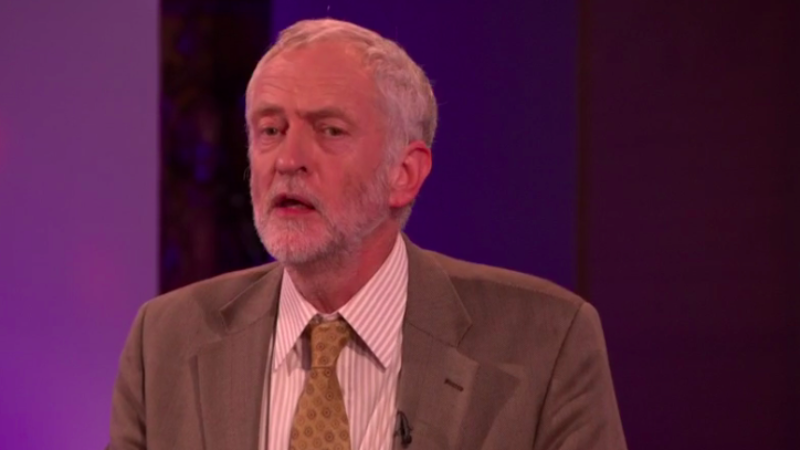

“You up? Call me, I have a big story for you.” That was the text I received just after one o’clock this morning. Within minutes, it was public that Hilary Benn had been sacked as Shadow Foreign Secretary.
That began a chain of events that, since Heidi Alexander’s resignation just after 8am, have moved at some breakneck speed. At the time of writing, eight Shadow Cabinet minister have gone: Hilary Benn, Heidi Alexander, Ian Murray, Seema Malhotra, Kerry McCarthy, Lilian Greenwood, Lucy Powell, Gloria De Piero. More are expected to follow.
Here’s what’s happening.
Who is it? How organised is it?
The move against Corbyn is very organised, and transcends traditional factions. None of the resignations so far are from people you could realistically call “Blairite” in the proper sense, and a source tells me old divisions are going back years for real cross-party co-ordination. “There has been no unity across factions for a common cause like this since the 1980s,” one said.
Certainly, many of those who have stuck their neck out so far are not the usual suspects – people like Lilian Greenwood, who has left her post at Shadow Transport, are not the kind of people to rock the boat. One of the shadow ministers to resign today stopped to chat to me in Parliament a few months ago, and told me that the leader’s office “seem to think I’m a signed up Corbynista. I’m not; I’m just trying to make things work.”
Are trade unions involved? What’s the deal with the NEC letter?
Many think that Corbyn will stay in place until he loses the confidence of trade union leaders. A letter from 12 union general secretaries, published on LabourList on Friday, suggests he still has their support.
There is no active involvement from any unions, and they are in no hurry to associate themselves with it. My understanding is there has been little to no communication between plotters and unions, leaving the latter with too many questions to want to enter the row. If Corbyn stays on, as could still happen, no general secretary wants to be the one that has severed their ties with the Labour leader’s office – especially as most union activists are behind the Corbyn project.
Unite’s Len McCluskey has given Corbyn his support, and I understand a letter of support for the Labour leader organised by the union is being circulated around the NEC. There are close ties between the UK’s largest union and the leader’s office: Anneliese Midgley recently made the move from Corbyn’s team to political director of Unite, while McCluskey (and Tom Watson) ally Karie Murphy now effectively runs Corbyn’s office.
Other union representatives on the NEC are hesitant to sign a letter they had no hand in writing while things are so uncertain, and I understand an emergency meeting of Labour’s governing body is going to be called.
What’s the plan? How does it relate to a no confidence vote?
Last summer, I wrote a short guide on how to remove a Labour leader, based on previous attempts. There is only one way it can be achieved according to the rules: a challenger receives enough nominations from MPs and defeats the incumbent in a full leadership contest.
The anti-Corbyn plotters aim to destabilise the leader before they move on to that scenario – especially as he would be in such a strong position to win a vote of the membership. Instead, shadow ministers are currently playing out option 3 from my list far more effectively than anti-Brown plotters achieved in 2009. By staggering resignations rather than quitting at once, you dominate the news agenda for longer, and make it harder for the leadership to get a grip on the problem or start a reshuffle.
But of course, there is also the prospect of the no confidence vote (option 2 on my list). After discussion at the Parliamentary Labour Party meeting tomorrow at 6pm, the hope is for a private ballot to take place between 9am-5pm on Tuesday, which plotters are confident of winning. They believe having both the resignations and the no confidence vote will put Corbyn in a position where his ability to lead the parliamentary party is simply untenable.
Is there a candidate?
There are several possible candidates – at least two of whom are in the Shadow Cabinet, but have not resigned, presumably not wanting to be associated with the coup. However, there is an overall consensus that everyone involved must get behind a single Not Corbyn candidate (or Not McDonnell candidate, if it comes to that).
Why now?
For a while, there has been two strands of anti-Corbyn thought. On the one hand, there is the war of attrition/chaos theory: undermine him at every opportunity. On the other, the targeted strike: wait until the moment is right, and organise to take him out with one clean movement.
What we appear to be seeing is a coalescing of these two trains of thought: they are going for the jugular now, but if it doesn’t work there appears to be a wider acceptance that there is no going back to trying to make it work.
There is also the feeling that the EU referendum was an electoral test Corbyn has failed, and that there will be no better opportunity before a general election to prove he can’t cut it at the ballot box. With the likelihood raised of an election later this year or early next, it has become of tantamount importance to rebels to act now – particularly after disappointing results in traditional Labour heartlands last Thursday.




More from LabourList
LabourList Christmas quiz 2025 round 4: Christmas Connects
EXCLUSIVE: A Christmas message from Hollie Ridley
‘Carol of the Bells: Christmas, Ukraine’s resistance and the fight for freedom’